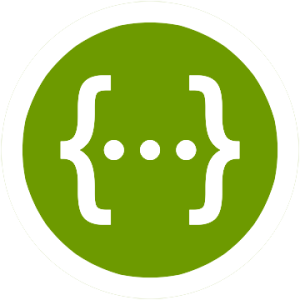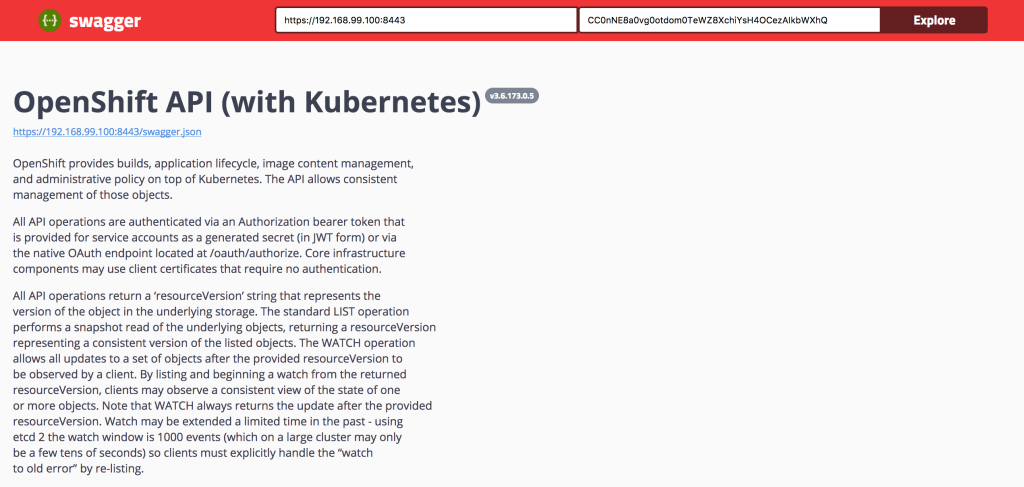An Update to Visualizing the OpenShift Rest API
Posted: October 22nd, 2017 | Author: sabre1041 | Filed under: Technology | No Comments »
As microservices architectures continue to proliferate, there becomes an ever-increasing need for insight into the options that may be provided by each service. This is important as the primary mechanism between each service is through lightweight request protocols that are typically exposed through an Application Programming Interface (API). Several tools have been developed to address concerns within this space and Swagger, an ecosystem of API development and testing tools, is one of the most popular options available.
Prior to the release of OpenShift version 3 in the summer of 2015, I designed a version of the Swagger User Interface (UI) frontend based on a concept from OpenShift lead engineer Clayton Coleman which enabled users to easily visualize and interact the OpenShift REST API (A blog entry can be found here). At that time, only two endpoints were exposed:
- /api – The Kubernetes API
- /oapi – The OpenShift API
Fast forward two years and Kubernetes, OpenShift and Swagger have come a long way. In the fall of 2015, it was announced that an open governance model would be created around the Swagger specification, which would solidify Swagger as the standard for describing REST API’s. Version 2.0 of Swagger represented the first release under the new model. The initial implementation of Swagger within Kubernetes and OpenShift made use of the older 1.2 version of the Swagger specification. Fortunately, a few months later, a 2.0 compatible specification was released to support the standardized model for describing the API.
Today, the OpenShift Swagger UI site has been updated that takes advantage of both the OpenShift provided Swagger 2.0 compatible specification along with the recently released Swagger 3.0 UI. No longer is the UI restricted to just the /api and /oapi endpoints, but all of the API’s exposed, including the new API groups, are available.

The repository can be found below:
https://github.com/sabre1041/openshift-api-swagger
The repository contains a simple HTML along with a few assets. It can be run as is from a local machine or deployed to a web server. Similar to the prior version, OpenShift must be configured to allow cross site JavaScript requests (CORS). Once OpenShift has been properly configured, all that is needed by the end user is the address of the OpenShift master and an OAuth token of a user already authenticated to OpenShift for methods requiring authentication.
Enjoy!
Leave a Reply